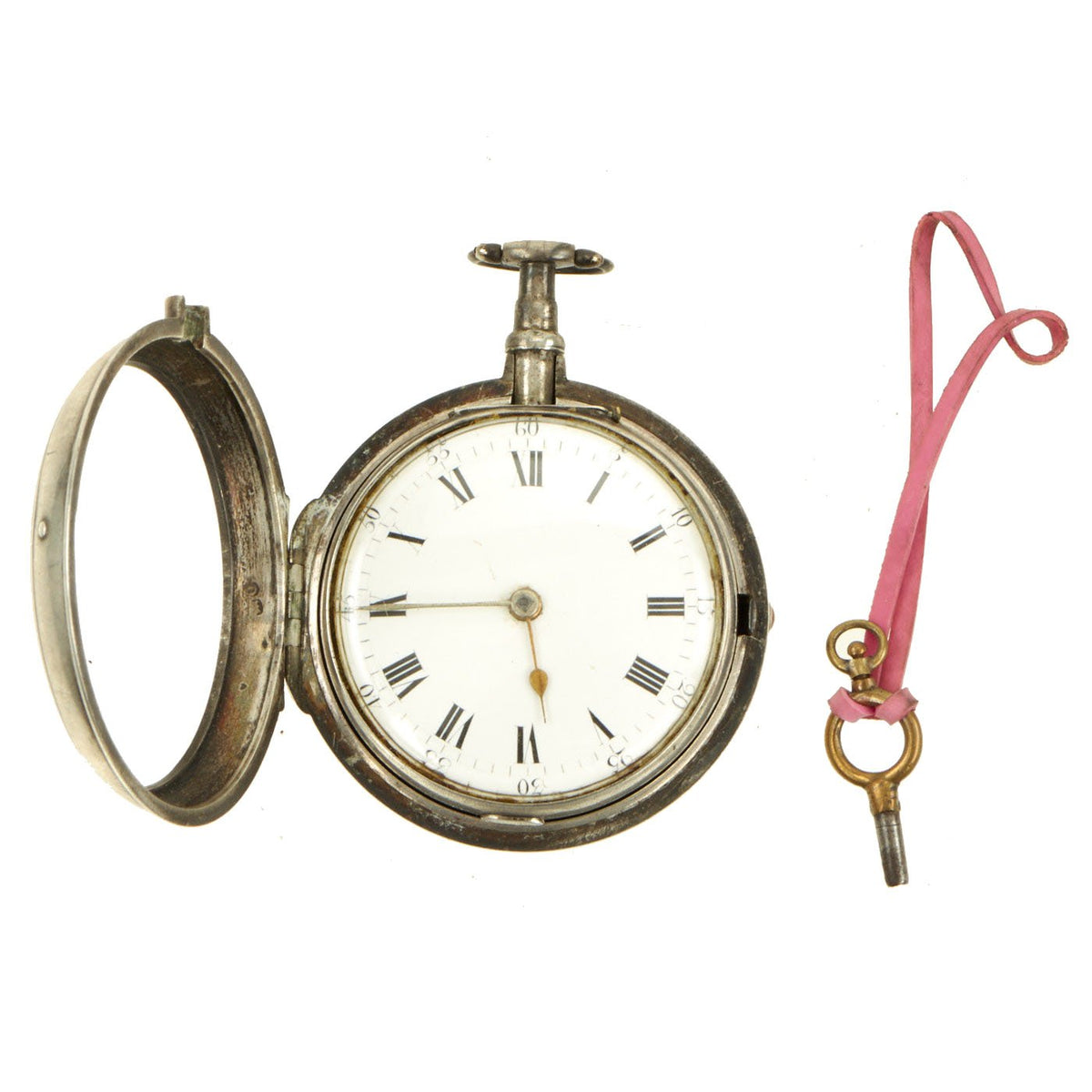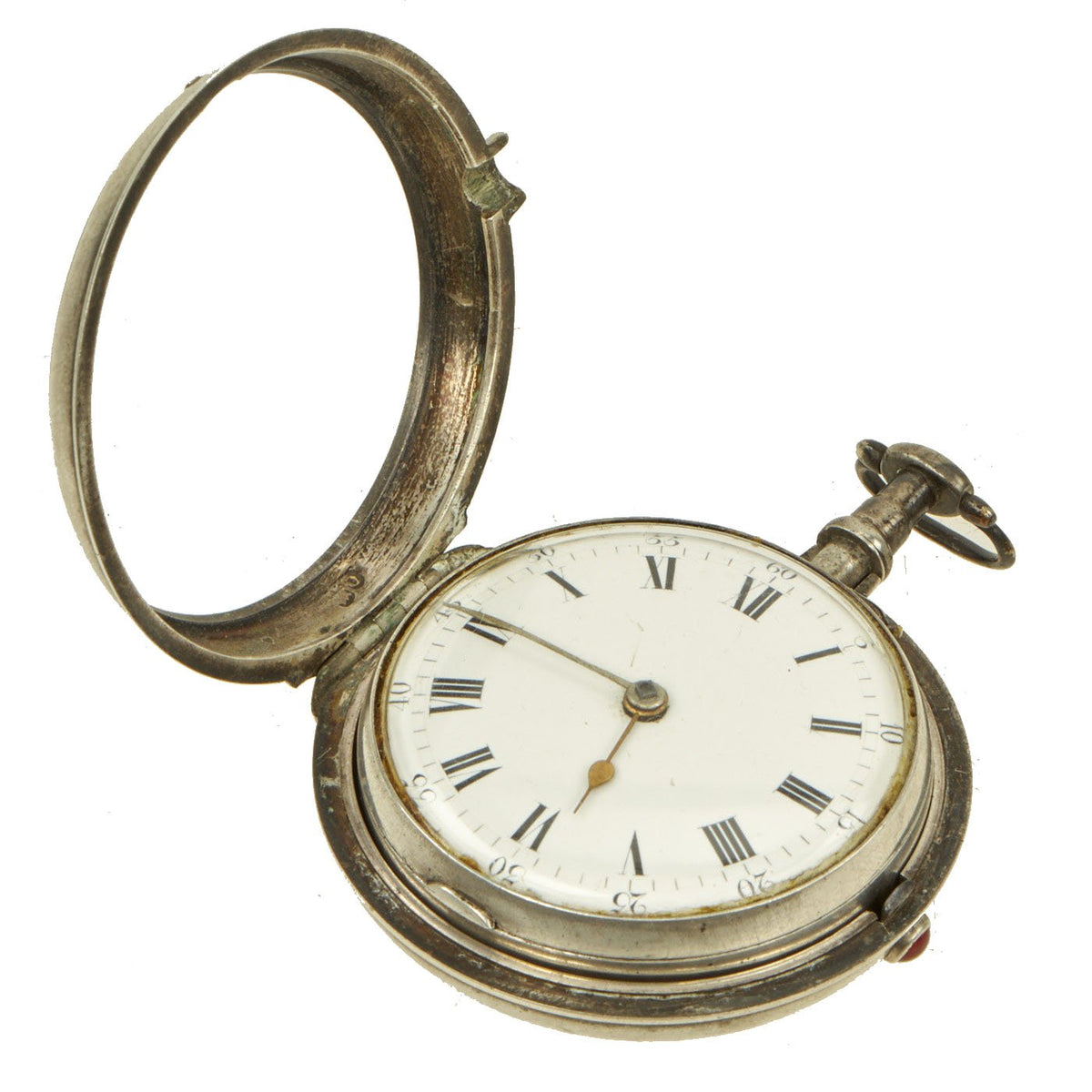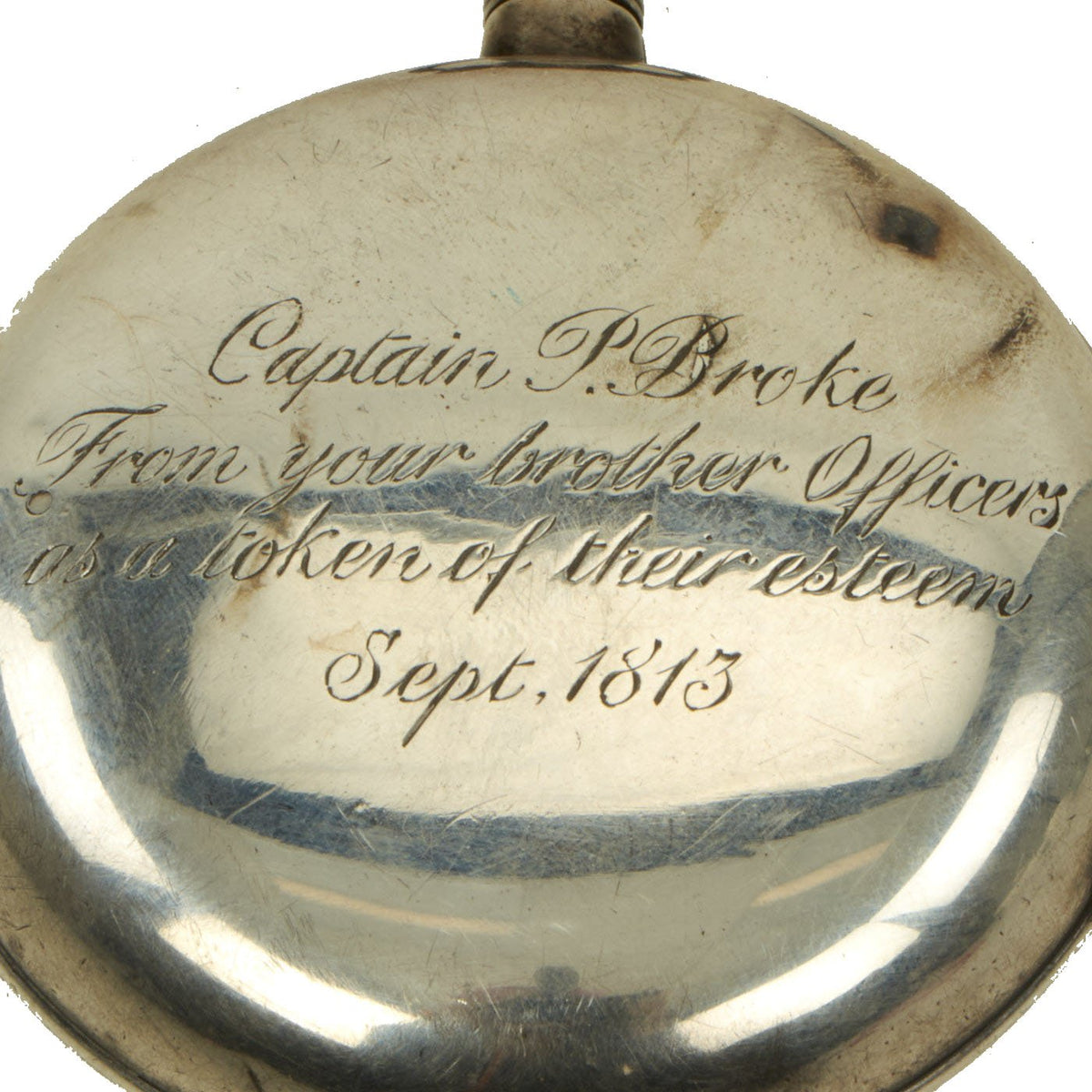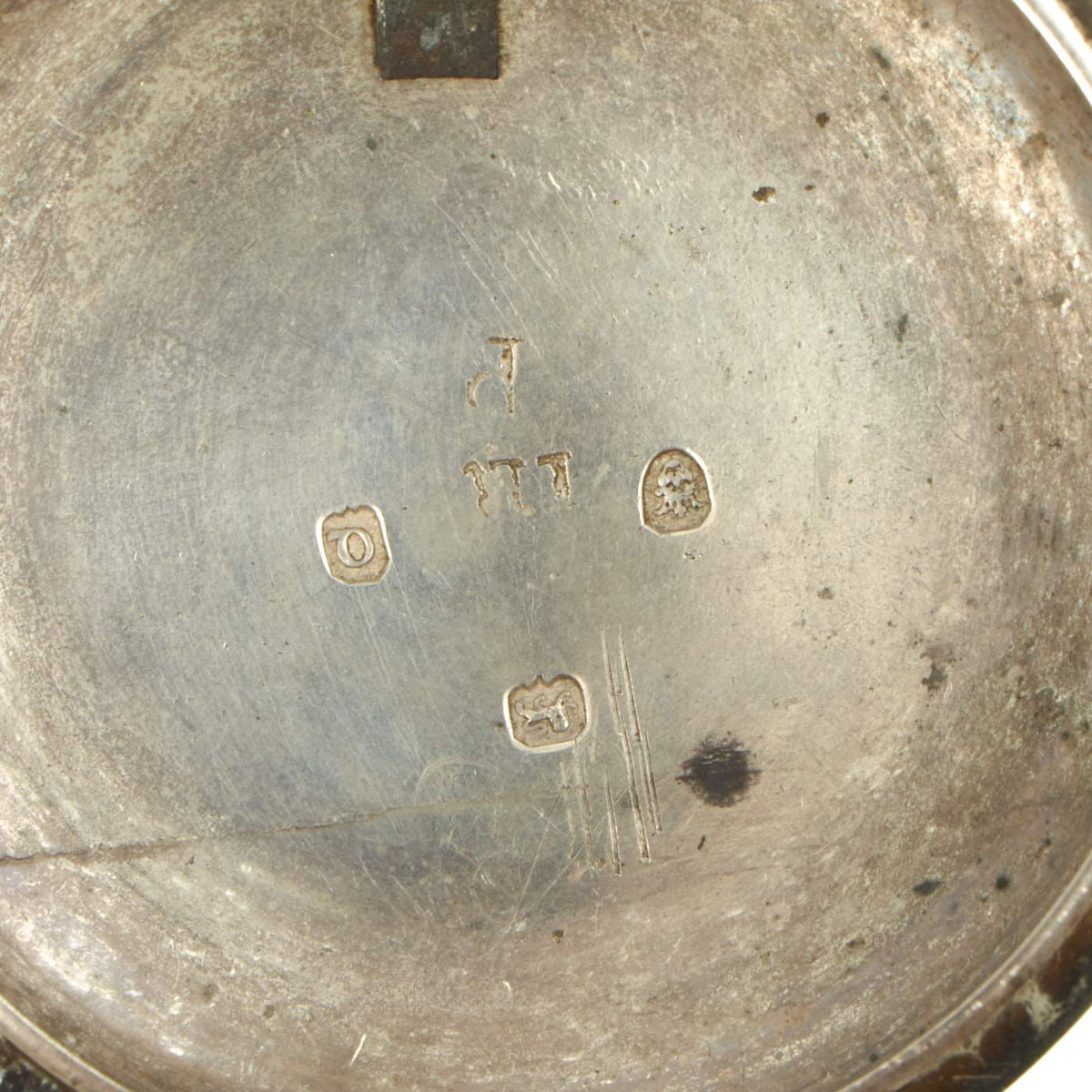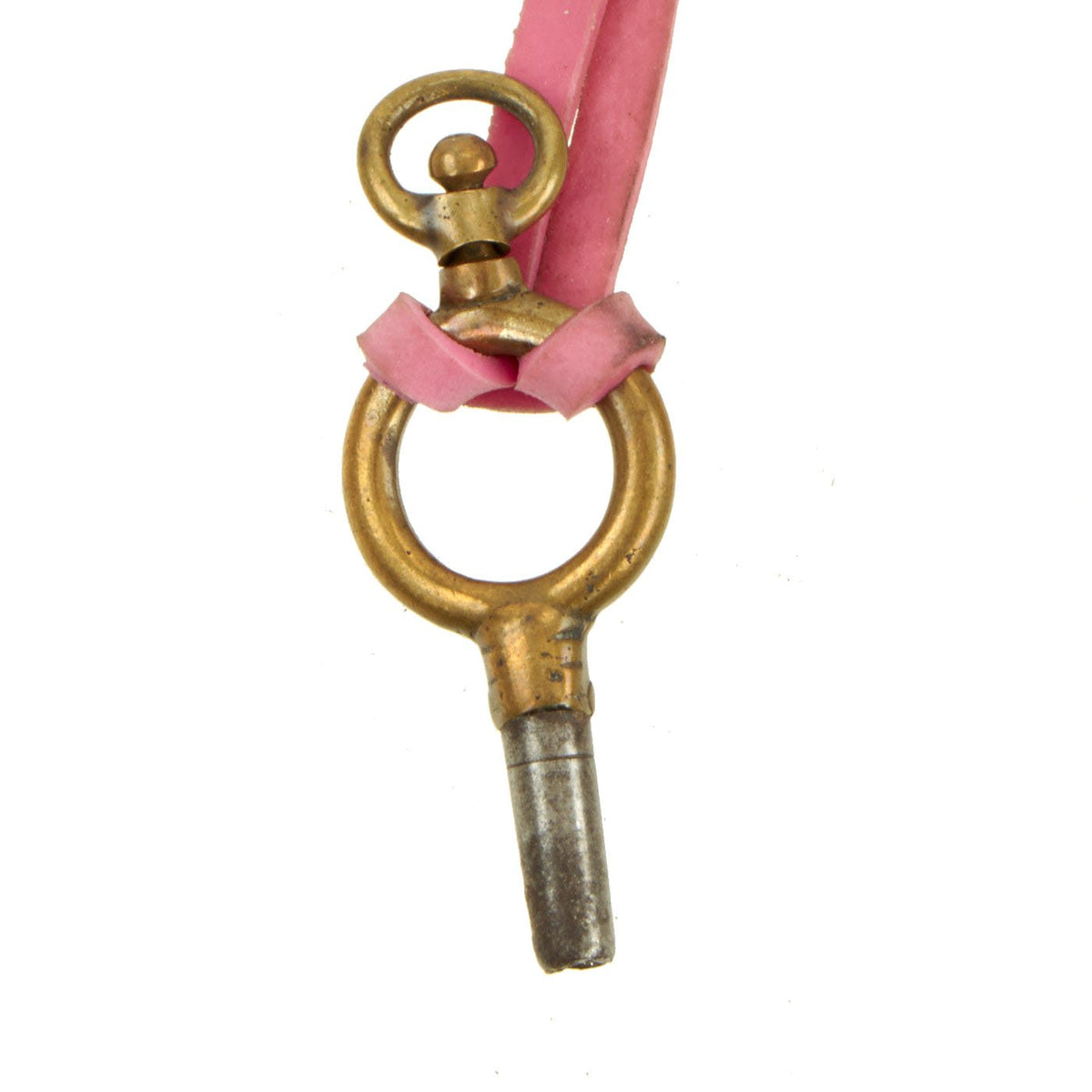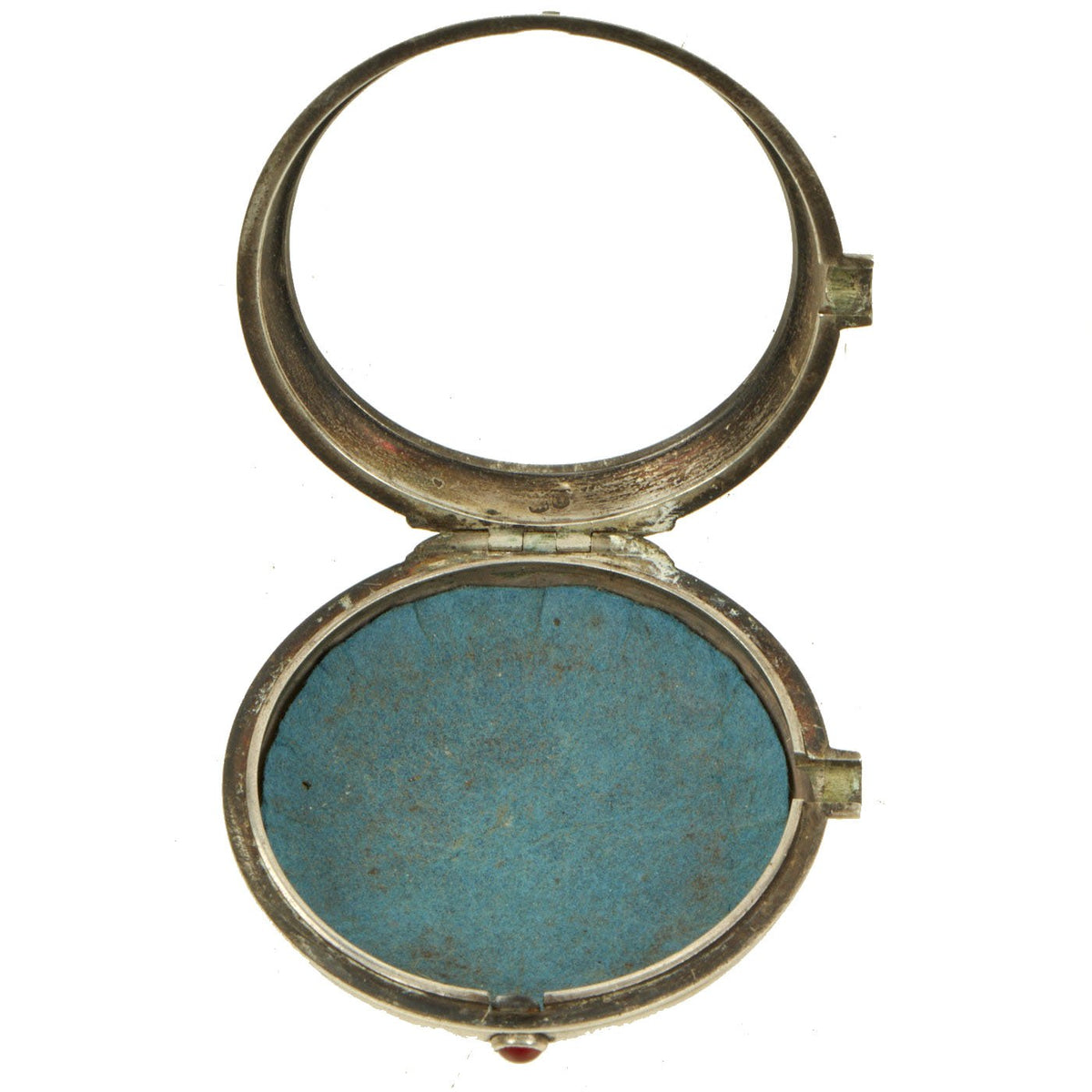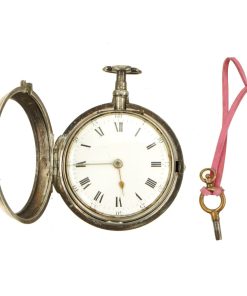Original British Cased Silver Pocket Watch Named To Captain P. Broke of HMS Shannon – Captured USS Chesapeake during War of 1812 Original Items
$ 2.995,00 $ 748,75
Original Item: One of a Kind. This is a fantastic early 19th Century bespoke silver pocket watch, presented to Captain Philip Broke of the 38-gun Leda-class frigate HMS Shannon. This ship took part in the War of 1812 with the United States, and captured the USS Chesapeake in a June 1 1813 naval action often called the “Battle of Boston Harbor.” After the Battle, his fellow officers presented him with this fine watch, which measures about 2 3/8 inches wide. it is housed in a fine locking Sterling Silver case, and comes complete with the winding key.
The back of the case is marked with the presentation dedication:
Captain P. Broke
From your brother Officers
as a token of their esteem
Sept. 1813
There are also Hallmarks on the inside of the case under the paper pad, which shows the “Lion” Sterling Standard Mark, the “Crowned Leopard’s Head” for London, and the letter “Q”, which indicates the silver was produced in 1811, right in period. The lid also has the “Q” mark. There is also what looks to be a I.R maker mark in the center, for John Robbins of London, registered in 1774.
The watch is in very good condition, showing light wear to the casing, with some small dents. The crystal hinges upward to adjust the time on the arms, as this is an old and simpler movement, which does not have the ability to set the time using the key. The presentation case has a lovely patina on the inside, and just looks great. The latching button must be held down firmly to open the case.
A fantastic piece of British Navy memorabilia, ready to use or display!
There is no warranty for this watch and returns for a non-working watch will not be honored. Please note all watches are wound and tested then recorded on video before shipment. We are not in the watch repair business- ALL SALES ARE FINAL.
The capture of USS Chesapeake, also known as the Battle of Boston Harbor, was fought on 1 June 1813, between the Royal Navy frigate HMS Shannon and the United States Navy frigate USS Chesapeake, as part of the War of 1812 between the United States and the United Kingdom. The Chesapeake was captured in a brief but intense action in which 71 men were killed. This was the only frigate action of the war in which there was no preponderance of force on either side.
At Boston, Captain James Lawrence took command of Chesapeake on 20 May 1813, and on 1 June, put to sea to meet the waiting HMS Shannon, commanded by Captain Philip Broke. Broke had issued a written challenge to Chesapeake’s commander, but Chesapeake had sailed before it was delivered.
Chesapeake suffered heavily in the exchange of gunfire, having her wheel and the halyard of her fore topsail shot away, rendering her un maneuverable. Lawrence himself was mortally wounded and was carried below. The American crew struggled to carry out their captain’s last order, “Don’t give up the ship!”, with the British boarding party quickly overwhelming them. The battle was notably intense but of short duration, lasting ten to fifteen minutes, in which time 226 men were killed or wounded. Shannon’s captain was severely injured in fighting on the forecastle, but survived his wounds.
Chesapeake and her crew were taken to Halifax, Nova Scotia, where the sailors were taken to prisoner-of-war camps; the ship was repaired and taken into service by the Royal Navy. She was sold at Portsmouth, England, in 1819 and broken up. Surviving timbers were used to build the nearby Chesapeake Mill in Wickham and can be seen and visited to this day. Shannon survived longer, being broken up in 1859.
Fast Shipping with Professional Packaging
Thanks to our longstanding association with UPS FedEx DHL, and other major international carriers, we are able to provide a range of shipping options. Our warehouse staff is expertly trained and will wrap your products according to our exact and precise specifications. Prior to shipping, your goods will be thoroughly examined and securely secured. We ship to thousands clients each day across multiple countries. This shows how we're dedicated to be the largest retailer on the internet. Warehouses and distribution centres can be located throughout Europe as well as the USA.
Note: Orders with more than one item will be assigned a processing date depending on the item.
Before shipping before shipping, we'll conduct a thorough inspection of the items you have ordered. Today, the majority of orders will be delivered within 48 hours. The delivery time will be between 3-7 days.
Returns
The stock is dynamic and we cannot completely manage it because multiple stakeholders are involved, including our factory and warehouse. So the actual stock may alter at any time. It's possible that you may not receive your order once the order has been made.
Our policy is valid for a period of 30 days. If you don't receive the product within 30 days, we are not able to issue a refund or an exchange.
You can only return an item if it is unused and in the same state as the day you received it. You must have the item in its original packaging.
Related products
Uncategorized
Uncategorized
Uncategorized
Uncategorized
Armoured Fighting Vehicles of the World: AFVs of World War One (Hardcover Book) New Made Items
Uncategorized
Band of Brothers ORIGINAL GERMAN WWII Le. F.H. 18 10.5cm ARTILLERY PIECE Original Items
Uncategorized
Angolan Rebel 1970s era 60mm Inert Display Mortar from Angolan Civil War Original Items
Uncategorized
Uncategorized
Uncategorized
Uncategorized
Uncategorized
Uncategorized
Uncategorized
Armored Burgonet Helmet & Polearm from Scottish Castle Leith Hall Circa 1700 Original Items
Uncategorized
Uncategorized
Uncategorized
Uncategorized
Uncategorized
Uncategorized
Uncategorized
Uncategorized
